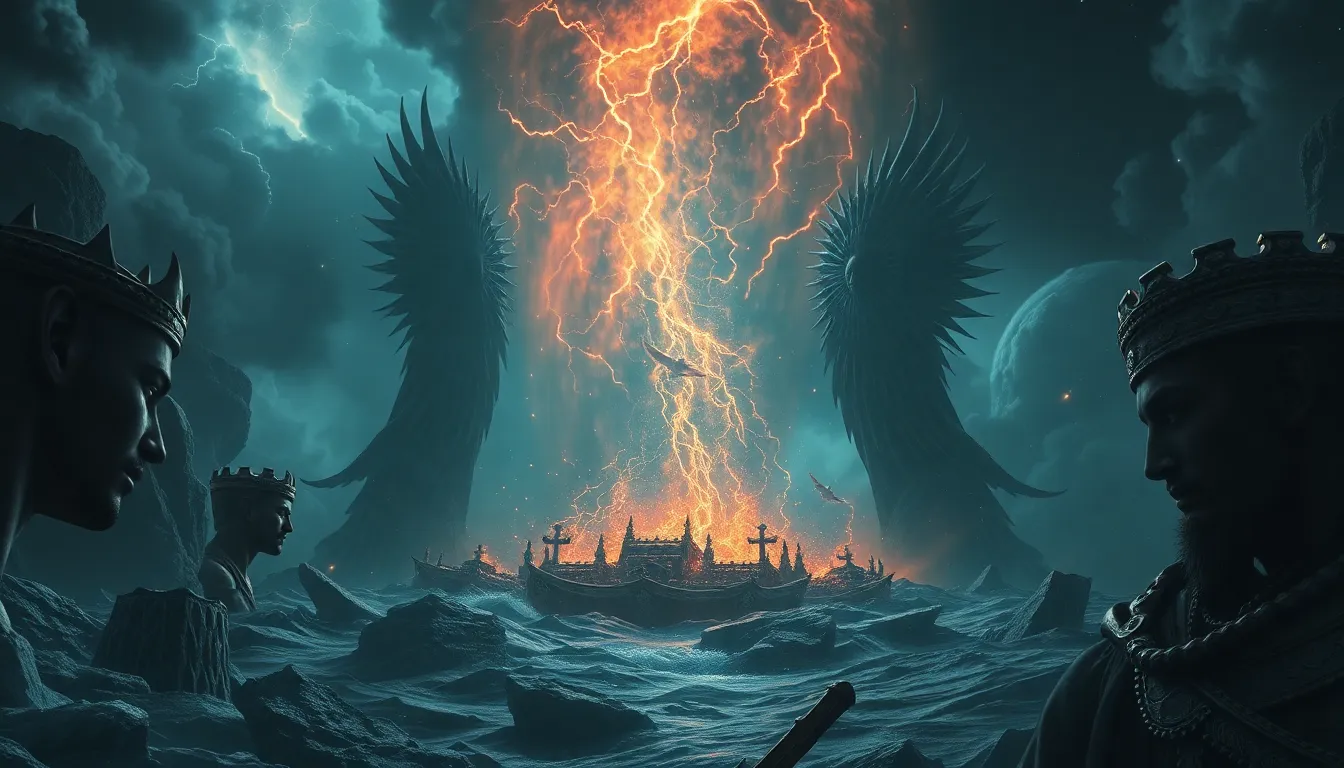The Myth of the Basilisk: The Lizard of Legends
1. Introduction to the Basilisk
The basilisk, often referred to as the “king of serpents,” is a mythical creature steeped in legend and lore. This fearsome beast is typically depicted as a serpent or lizard with the ability to kill with its gaze. Historically, the basilisk has been a symbol of death and destruction, capturing the imagination of cultures throughout the ages.
In folklore and mythology, the basilisk holds a significant place, often representing the darker aspects of nature and the unknown. Its fearsome reputation has made it a compelling figure in stories and cautionary tales.
2. Origins of the Basilisk Legend
The origins of the basilisk can be traced back to ancient sources, particularly in Greek and Roman texts. The earliest accounts describe it as a serpent with lethal abilities, often associated with the sun and its destructive power. The Greeks referred to it as the “basiliskos,” meaning “little king,” which hints at its regal and dangerous nature.
As time progressed, the basilisk transitioned into medieval European folklore, where it became a prominent figure in bestiaries—collections of descriptions of animals, both real and mythical. These texts not only documented the basilisk’s physical traits but also elaborated on its deadly powers and its role in the natural world.
3. Physical Characteristics of the Basilisk
The basilisk’s appearance varies across different cultures, but it is most commonly depicted as a large serpent or lizard with distinctive features that set it apart from other mythical creatures. Key characteristics often include:
- A crown or crest on its head
- Scales that shimmer like jewels
- Eyes that are said to be capable of causing death with a single glance
When compared to other mythical beings, such as dragons or griffins, the basilisk stands out due to its unique physical traits and its association with fear and death. The symbolism of its features, particularly the crown, suggests a connection to royalty and power, further enhancing its fearsome reputation.
4. Powers and Abilities of the Basilisk
The basilisk is renowned for its legendary lethal gaze, which is said to be capable of killing any creature that looks directly at it. This uncanny ability has cemented its status as a creature of terror in folklore.
In addition to its deadly stare, the basilisk possesses various supernatural abilities, including:
- Venom that can kill or petrify
- Flight, in some interpretations, enabling it to swoop down on its prey
- The ability to cause plants to wither and die with its presence
In folklore, the basilisk often plays the dual role of a guardian and a destroyer, symbolizing the fine line between protection and danger.
5. The Basilisk in Literature and Art
The basilisk has made notable appearances in literature throughout history. Renowned writers such as Dante Alighieri and William Shakespeare have referenced this creature in their works, using it as a metaphor for danger and malevolence.
In art, the basilisk has been depicted in various forms, from medieval manuscripts to Renaissance paintings. Artists have portrayed it as a fearsome beast, often surrounded by the destruction it leaves in its wake. Cultural interpretations of the basilisk vary, reflecting the societal fears and values of different eras.
6. The Basilisk in Modern Media
In contemporary storytelling, the basilisk continues to captivate audiences. It has appeared in numerous films, television series, and video games, often reimagined to fit modern narratives. For instance, the basilisk features prominently in the Harry Potter series, where it is depicted as a giant serpent lurking in the shadows.
These reinterpretations have helped to keep the legend of the basilisk alive, allowing it to resonate with new generations and maintain its place in popular culture.
7. Scientific Basis: Real-Life Creatures and the Basilisk
Exploring the connection between myth and reality reveals potential inspirations for the basilisk’s legend. Real-life creatures, such as monitor lizards and chameleons, exhibit unique traits that may have contributed to the basilisk myth. The chameleon’s ability to change color and the monitor lizard’s fearsome appearance could easily have sparked tales of the basilisk’s supernatural abilities.
Exaggeration plays a crucial role in the formation of myths, transforming ordinary animals into extraordinary beasts. The basilisk’s fearsome reputation may have been amplified over time, leading to the legendary creature we recognize today.
8. The Basilisk and the Concept of Fear
The basilisk myth carries profound psychological implications, representing humanity’s innate fears of the unknown and the dangers lurking in the dark corners of existence. The symbolism of fear associated with the basilisk reflects broader societal anxieties, serving as a reminder of the perils that can arise from ignorance and superstition.
As a creature that embodies danger, the basilisk prompts us to confront our fears, making it a powerful symbol in folklore and culture.
9. Cultural Variations of the Basilisk Myth
Across various cultures, the basilisk has parallels with similar creatures, such as the cockatrice and dragons. Each culture adapts the myth to reflect its unique values and fears.
For example, in some regions, the cockatrice is portrayed as a hybrid of a rooster and a serpent, while dragons are often depicted as powerful guardians or malevolent destroyers. These regional adaptations showcase the versatility of the basilisk myth and its ability to resonate with different cultural narratives.
10. Conclusion: The Enduring Legacy of the Basilisk
The basilisk’s impact on folklore and culture is undeniable, serving as a powerful symbol of fear, power, and the unknown. Its enduring legacy is a testament to humanity’s fascination with mythical creatures and the stories we create to explain the world around us.
As we reflect on the basilisk’s relevance in contemporary society, it becomes clear that the myth continues to captivate our imagination, urging us to explore the depths of our fears and the mysteries of existence. The basilisk, with its rich history and complex symbolism, remains a timeless figure in the tapestry of mythology.




